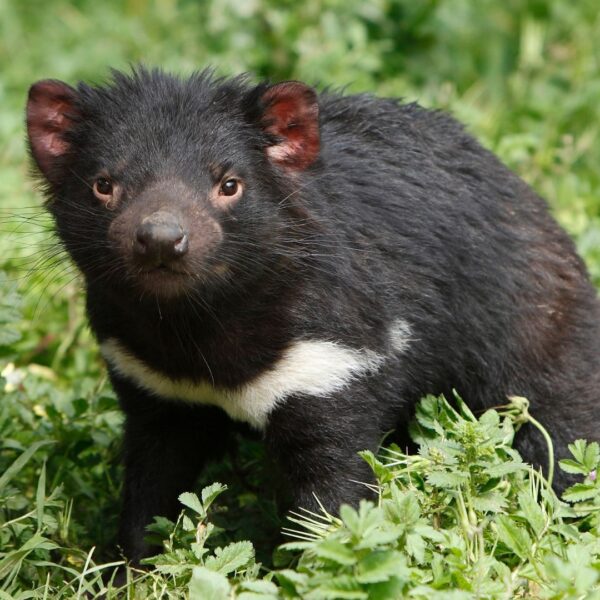
International Tasmanian Devil Day
The Tasmanian devil, known scientifically as Sarcophilus harrisii, is a carnivorous marsupial unique to the island of Tasmania. Its distinctive features include a stocky build, robust head, and a tail roughly half the length of its body, allowing it to store fat reserves. While they are the largest carnivorous marsupials alive today, a decline in their population due to disease and loss of habitat has raised concerns about their conservation status.
I had the good fortune to meet a few Tasmanian devils when visiting Devils at Cradle and Trowunna Wildlife Sanctuary in Tasmania. One night we witnessed a group of devils feeding. It was a crisp cool night with the Southern Cross and stars shining brightly on the fields of green. Tasmania remains one of my favorite places with a beauty that defies definition and the devils one of my favorite animals.
The name ‘Tasmanian Devil’ came from the first European settlers who heard mysterious and shrill screams and growls from within the bush. Early settlers believed the sounds were from evil spirits even from the devil. Having heard the devils vocalizations I can understand the early settlers being frightened not knowing who was behind the sound.
International Tasmanian Devil Day places a spotlight on this endangered species, encouraging worldwide awareness and support for conservation efforts. Over the years, Tasmanian devils have faced numerous challenges, most notably the outbreak of a contagious cancer known as Devil Facial Tumour Disease (DFTD). Conservation programs aim to safeguard the remaining devil populations through disease management, breeding programs, and habitat protection.
Key Takeaways
- Tasmanian devils are the largest surviving carnivorous marsupials, native to Tasmania.
- Conservation efforts are crucial due to the species’ endangered status and the impact of DFTD.
- International Tasmanian Devil Day raises awareness and supports the survival of this unique species.
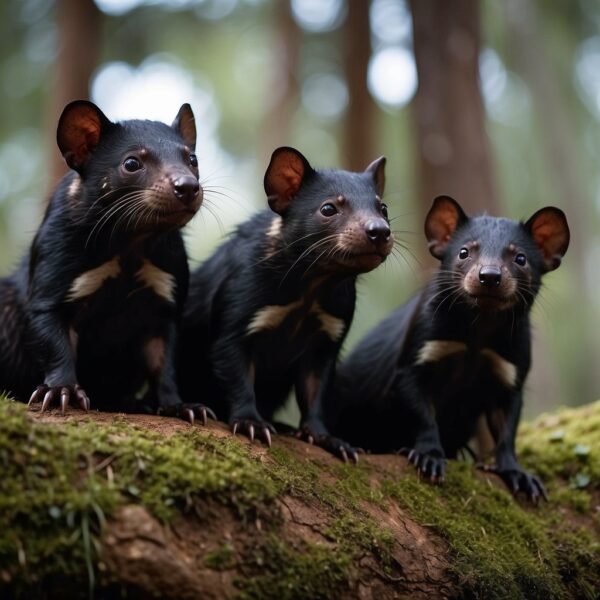
Understanding Tasmanian Devils
The Tasmanian devil stands as the largest carnivorous marsupial today, embodying a unique set of behaviors and features that distinctively adapt them to their environment.
Physical Characteristics
Tasmanian devils have a stocky build, with their forelegs slightly longer than their hind legs, enabling short bursts of speed. They possess a heavy, squarish head, powerful jaws, and sharp teeth. Adults typically have black fur and can vary in size, often reaching a body length of 50 to 80 cm and a tail about half that length, weighing up to 12 kg (26 pounds).
Behavior and Social Structure
These marsupials are known for their solitary nature, engaging in fierce competition and rather aggressive interactions, especially during feeding. They convey emotions and intentions through an array of vocalizations, including growls. Fights among devils are common, often characterized by loud and disturbing nocturnal disturbances.
Diet and Feeding Habits
Devils are predominantly scavengers, feeding mainly on the carrion of dead animals but will also hunt if required. Their diet consists of a variety of items, from small prey like insects to larger animal carcasses, which they can consume entirely, bones included, thanks to their robust teeth and jaws.
Habitat and Distribution
The species is endemic to Tasmania, an island state of Australia, and once roamed the mainland. Tasmanian devils thrive in various environments, ranging from the coasts to the forests. Loss of habitat presents a critical threat to their distribution and population.
Reproduction and Lifecycle
Female devils give birth to large litters of young, yet due to having only four nipples, survival enforces intense competition among the joeys. After a short gestation period, babies are born underdeveloped and must continue to grow within the safety of the mother’s pouch. Weaning occurs months later as they develop independence.
Tasmanian Devils in Popular Culture
They’ve been famously portrayed in media, like the Looney Tunes character Taz, which mirrors their wild nature albeit with humorous exaggeration. This portrayal, while not entirely accurate, has made the Tasmanian devil an iconic symbol of wildlife in Tasmania and has drawn public interest to their preservation.
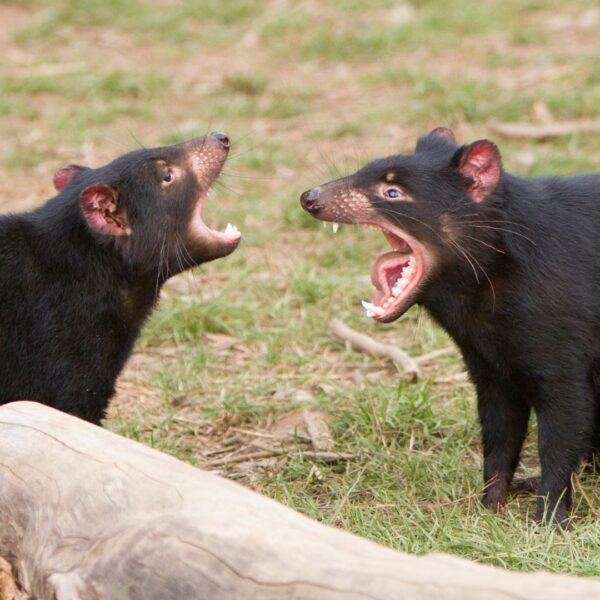
Conservation Efforts
Tasmanian Devils face extinction risks primarily due to Devil Facial Tumour Disease, prompting significant conservation initiatives.
Threats to Survival
The main threat to the Tasmanian Devil is the Devil Facial Tumour Disease (DFTD), a fatal condition characterized by cancers that manifest as large facial tumors. This contagious cancer spreads among devils when they bite each other, a common behavior during social interactions. The International Union for Conservation of Nature (IUCN) has listed the Tasmanian Devil as endangered on its Red List, highlighting the urgency of conservation efforts to prevent their extinction.
Rescue and Rehabilitation Programs
The Save the Tasmanian Devil Program (STDP) is at the forefront of the response to the threat posed by DFTD. With the following aims, the program works to ensure the species’ survival:
- An enduring wild population: The STDP seeks to maintain a healthy, genetically diverse population in Tasmania.
- Science-based management: Research under the program has been fundamental in understanding DFTD and developing management strategies.
- Insurance populations: Establishing these groups of devils helps to safeguard against total loss in the wild.
The efforts include collaborations among various organizations for research and to generate viable disease management approaches. Conservation practices also focus on habitat protection, vital for sustaining devil populations, and are underpinned by rigorous scientific studies documenting the success and challenges of these initiatives.
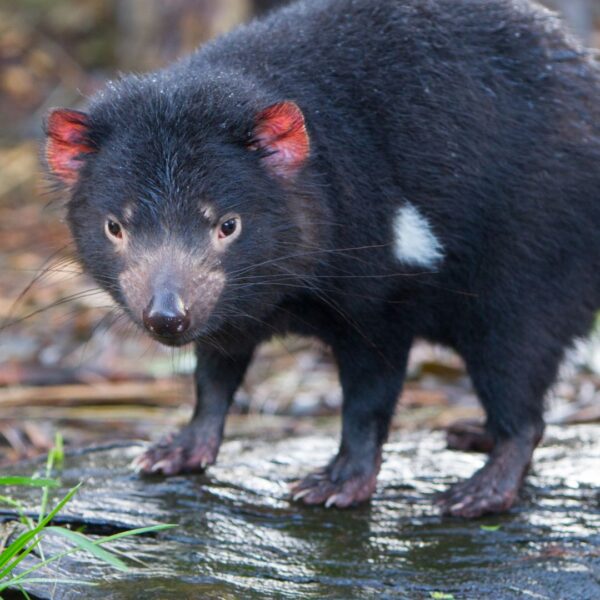
Interactions with Humans and Ecosystems
Tasmanian Devils play a crucial role in their ecosystem as scavengers and are greatly affected by human activities. Here, we examine their scavenging behavior, relationship with humans, and the focus of current scientific research.
Tasmanian Devils as Scavengers
Tasmanian Devils are primarily scavengers, with a significant part of their diet coming from carrion, which includes the remains of animals killed by vehicles or left by farmers. Historically, before the extinction of the thylacine, or Tasmanian tiger, in 1936, and the introduction of dingoes, Tasmanian Devils co-existed with other native predators. They now fill an essential niche, consuming carcasses which helps control the spread of disease and maintain ecosystem health. Their interactions are usually solitary, but they can exhibit communal feeding behavior when scavenging large carrion.
Conflict and Coexistence
The presence of Tasmanian Devils can lead to conflict with humans, especially in areas where livestock such as sheep and cattle are raised. Devils are sometimes mistakenly blamed for killing livestock, though they are more likely to scavenge already deceased animals. Coexistence is facilitated through conservation efforts and educational programs that aim to minimize negative interactions. Motor vehicles are a threat to devils, often leading to roadkill which, ironically, provides a source of carrion for other devils yet contributes to mortality rates.
Scientific Research and Study
Research on Tasmanian Devils has significantly increased due to the emergence of devil facial tumour disease (DFTD), a contagious cancer that has led to sharp declines in their populations. Science plays a critical role in understanding the impact of disease and human interactions on devil populations. Studies using technologies such as animal-borne video collars have provided insights into their ecological role and behavior. Scientists also analyze the impact of human-induced changes on their diet and monitor how increased interaction with habitats modified by humans may influence the spread of DFTD. This research is vital for developing strategies to ensure the devils’ long-term health and stability within the ecosystem.
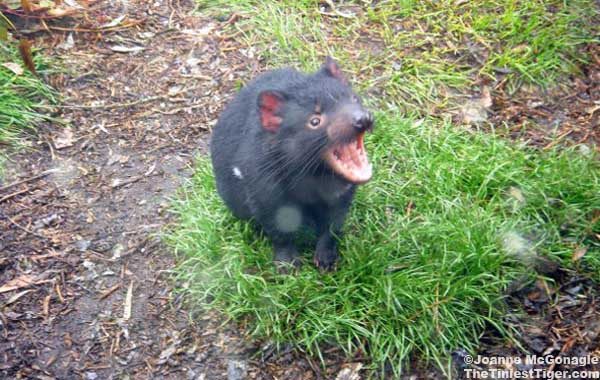
The Global Significance of Tasmanian Devils
Tasmanian Devils play a crucial role in both the ecosystem and culture, with their impact extending far beyond their native habitat.
Environmental Impact
Tasmanian devils (Sarcophilus harrisii) are the largest carnivorous marsupials in the world today, confined to the island of Tasmania. These members of the Dasyuridae family are integral to the island’s ecosystem, fulfilling the role of a top scavenger. Devils aid in the breakdown of carrion, thus preventing the spread of disease and maintaining a balanced food web. Their consumption of carrion directly impacts the populations of small mammals, reptiles, and birds, essentially contributing to the biodiversity and health of their habitats.
- Scavenging: Reduces carrion, curbing disease spread.
- Diet: Includes small mammals, enhancing diversity control.
- Ecosystem role: Apex scavenger before the extinction of the Tasmanian tiger.
Cultural Impact
In addition to their ecological role, Tasmanian devils significantly influence human culture, particularly in Australia. Known globally for their ferocious demeanor and distinctive appearance, they’ve become iconic symbols of Tasmania. The character Taz from Looney Tunes drew international attention to the species, portraying an animated, albeit exaggerated, version of the Tasmanian devil. This pop-culture representation has made an indelible impact, inciting both interest and conservation efforts around the real-life marsupials.
- Symbolism: Emblematic of Tasmania’s unique wildlife.
- Awareness: Pop icon Taz elevated global awareness and conservation interest.
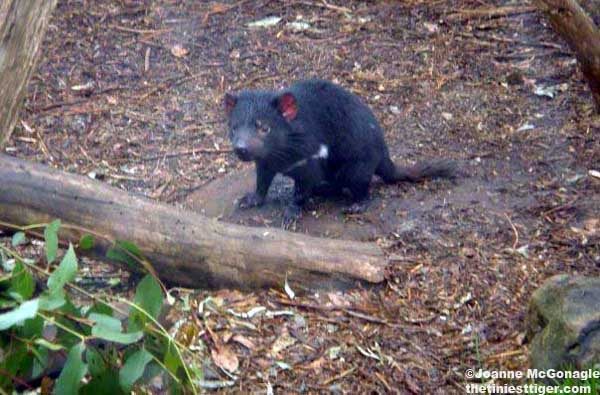
Frequently Asked Questions
In recognizing International Tasmanian Devil Day, it’s important to address common inquiries about these unique marsupials, ranging from their diet and mating habits to their current conservation status.
What is the typical diet of a Tasmanian devil?
Tasmanian devils are carnivorous marsupials and primarily scavengers, feasting on the carcasses of dead animals. They are also capable hunters, eating small prey such as insects, amphibians, and reptiles, as well as birds and mammals.
How does the mating behavior of Tasmanian devils differ from other marsupials?
During the mating season, female Tasmanian devils often mate with multiple males, who compete fiercely for mating rights. Unlike some marsupials, Tasmanian devils can show aggressive behavior during this period, with males guarding females for extended periods to prevent rival mating opportunities.
In what types of habitat can Tasmanian devils be found?
Tasmanian devils are versatile and can live in a variety of environments on the island of Tasmania. Their habitats range from coastal heath and eucalyptus forests to agricultural and suburban fringes.
What are some interesting behaviors exhibited by Tasmanian devils during their daily routine?
Tasmanian devils are primarily nocturnal and spend the daylight hours in dens or thick brush. At night, they become active, using their keen sense of smell to locate food. They are known for their loud screeches and growls, especially while feeding, which can be heard at significant distances.
What current factors contribute to the endangerment of Tasmanian devils?
The contagious devil facial tumour disease (DFTD) is the primary threat to the survival of the species. DFTD causes deadly tumors and has severely impacted their population. Habitat destruction and vehicle collisions also contribute to their endangerment.
How has the population of Tasmanian devils changed over recent years?
The Tasmanian devil population has declined by over 80% since the emergence of DFTD in the 1990s. Conservation efforts, including captive breeding programs and disease research, are ongoing to try to protect the remaining population and possibly increase their numbers in the wild.